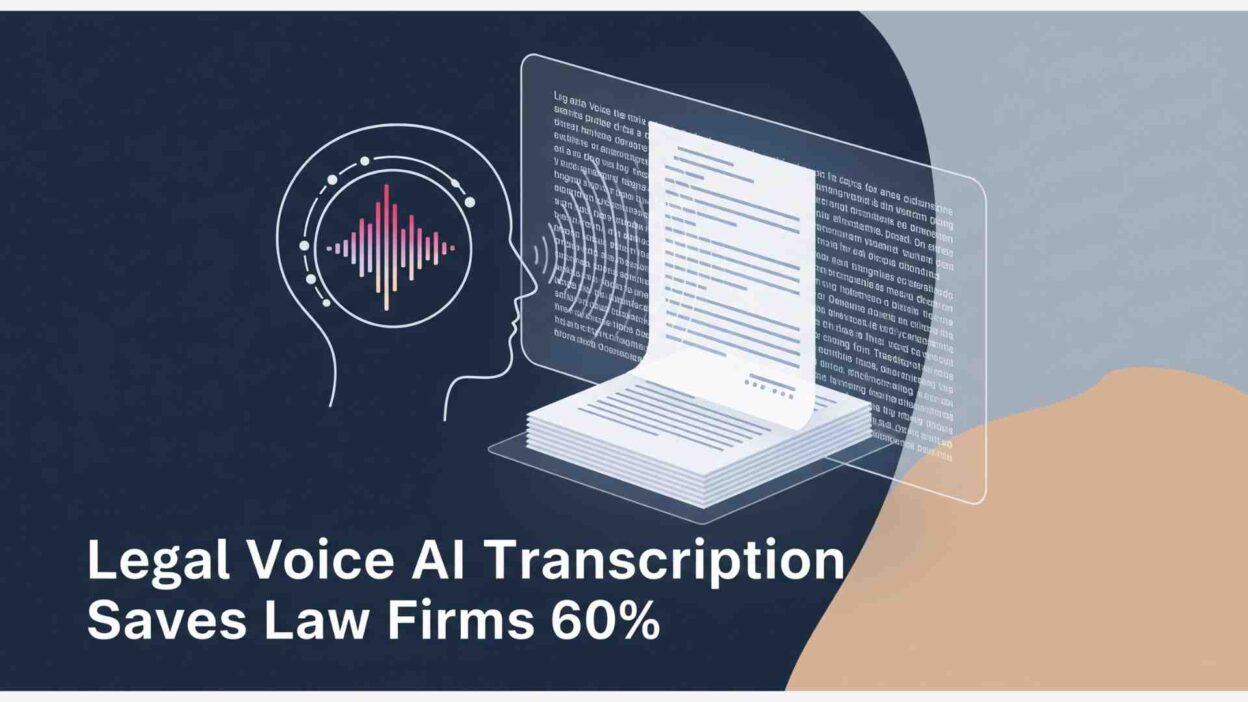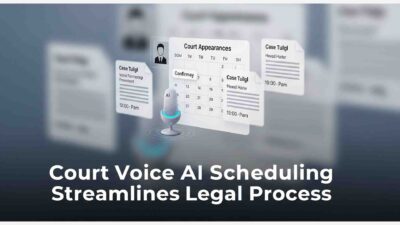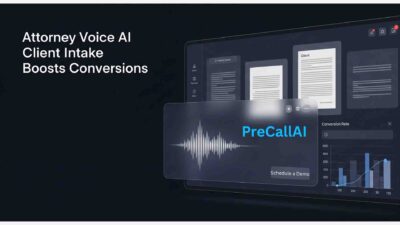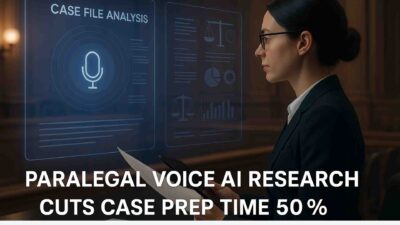TL;DR Legal voice AI transcription transforms how law firms handle documentation. This technology cuts costs by 60% while improving accuracy rates across all legal proceedings.
Table of Contents
How Legal Voice AI Transcription Works
Voice recognition software captures spoken words during depositions and hearings. The system converts audio files into text documents instantly. Legal professionals receive accurate transcripts within minutes of recording completion.
Advanced algorithms understand legal terminology better than traditional transcription services. The software recognizes complex case names and statutory references. Court reporters can focus on other critical tasks during proceedings.
Cost Savings Benefits for Law Firms
Reduced Labor Expenses
Manual transcription requires hours of specialized work. Legal voice AI transcription eliminates these labor-intensive processes. Firms save thousands of dollars monthly on transcription services.
Professional transcriptionists charge $3-5 per minute of audio. AI systems process the same content for pennies. Small firms see immediate budget relief from this technology.
Faster Document Processing
Traditional transcription takes 24-48 hours for completion. Legal voice AI transcription delivers results in real-time. Attorneys access case materials immediately after court sessions.
Quick turnaround times improve client service quality. Legal teams prepare better arguments with instant access to testimony. Case preparation becomes more efficient across all practice areas.
Accuracy Improvements in Legal Documentation
Enhanced Recognition Capabilities
Modern AI systems achieve 95% accuracy rates in legal contexts. Legal voice AI transcription understands courtroom acoustics and multiple speakers. The technology adapts to different accents and speaking patterns.
Error rates drop significantly compared to human transcriptionists. Legal terminology receives proper recognition and formatting. Complex case citations appear correctly in final documents.
Quality Control Features
Automated proofreading catches common transcription errors. The system flags uncertain words for manual review. Legal professionals verify important sections before finalizing documents.
Timestamp markers help locate specific testimony segments. Speakers receive proper identification throughout transcripts. Legal voice AI transcription maintains consistent formatting standards.
Implementation Strategies for Law Firms
Technology Integration
Cloud-based solutions require minimal hardware investments. Legal voice AI transcription works with existing recording equipment. IT departments handle setup within hours of purchase.
Staff training takes less than one day for most team members. The interface resembles familiar word processing software. Legal professionals adapt quickly to new workflow processes.
Security and Compliance
HIPAA compliance protects sensitive client information. Legal voice AI transcription meets all attorney-client privilege requirements. Data encryption ensures confidentiality during processing and storage.
Audit trails track all document access and modifications. Firms maintain complete control over transcription data. Security protocols exceed traditional transcription service standards.
Future Outlook for Legal Technology
Artificial intelligence continues improving transcription accuracy rates. Legal voice AI transcription will integrate with case management systems. Predictive analytics will enhance legal research capabilities.
Voice commands will control entire legal workflows. Document creation becomes fully automated for routine matters. Legal professionals focus on strategic thinking rather than administrative tasks.
Read More: Voice Bot Complaint Handling: Resolving Legal Issues Quickly
Conclusion

Legal voice AI transcription delivers substantial cost savings for modern law firms. The technology improves accuracy while reducing processing times dramatically. Forward-thinking firms gain competitive advantages through early adoption.
Investment in this technology pays for itself within months. Legal professionals work more efficiently with instant transcription access. Client satisfaction increases with faster case resolution timelines.






[…] professionals prepare cases. Law firms are saving countless hours using smart automation tools. Case preparation automation has become essential for modern legal […]